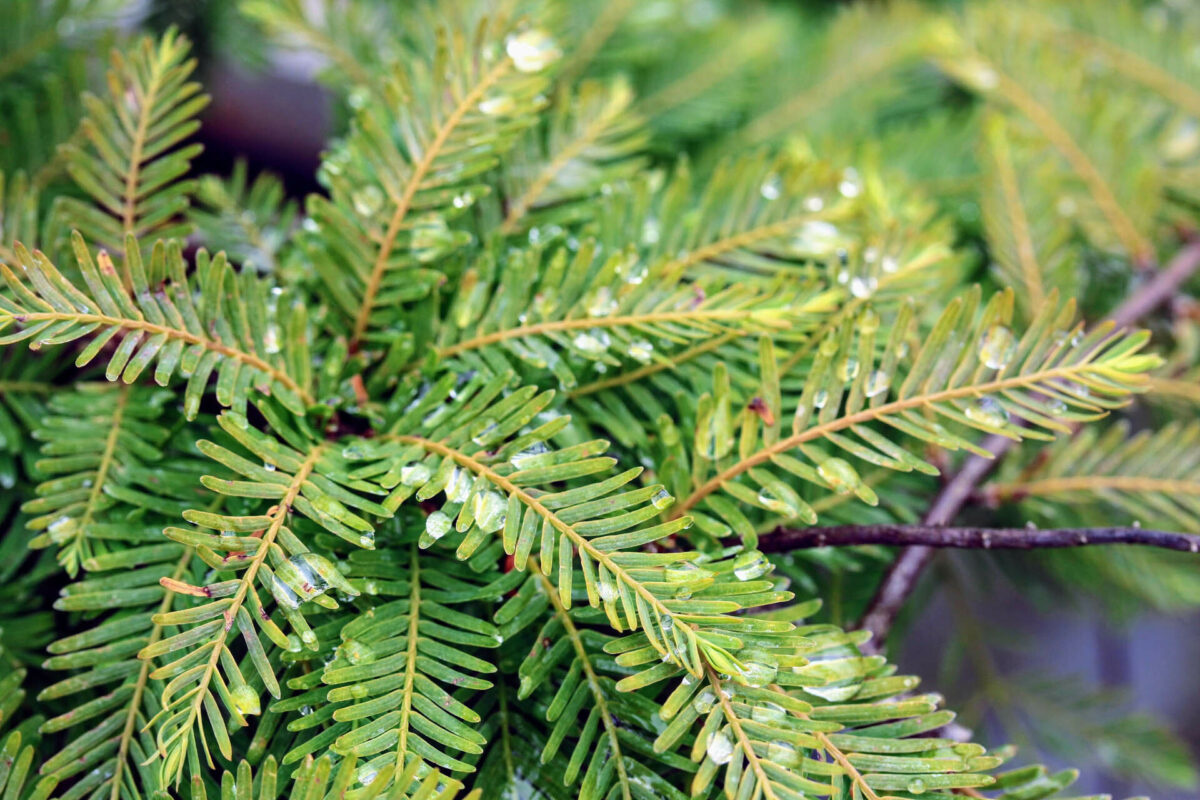While it is true that, sadly, one in five plant species is currently at risk of extinction, approximately 2,000 new plants are discovered each year, as The Guardian reported in 2016. Though few of these newly found species are “prehistoric” -- meaning that they have existed for millions of years -- once in a while such a species is actually discovered. This is the story for two such prehistoric plants at Landis, Sciadopitys verticillata, Japanese umbrella pine, and Metasequoia glyptostoboides, dawn redwood.
Sciadopitys verticillata is an evergreen conifer that dates back to the Triassic period (250 - 199 million years ago).
Though it once thrived across Eurasia and North America, today it is only found in Japan. A true living fossil on earth, Sciadopitys grows slowly and will attain a height of 60 feet with a 15 – 20 foot spread. Hardy to zones 5-10, it has few insect and disease issues, although it does require moist but well-drained soils and some protection from excessive wind. This conifer does not tolerate standing water, drought, or air pollution and prefers full sun or filtered shade.
The stand-out feature of Sciadopitys verticillata is most definitely its leaves. Two kinds of leaves are present on its branches: one is small and scale-like, gathered at branch tips. The other, more obvious, leaves are glossy green, 2-5 inches long, resembling pine needles, yet 1/8 inches wide and thick skinned due to the fusion of two actual leaves to resemble one. These plastic-appearing leaves are amazing to see and touch -- and seem actually prehistoric!
Three Sciadopitys verticillata grow at Landis. The oldest specimen was planted by Landis founder Fred Lape in 1951 and can be found at the far end of the Choice Conifer Collection. It survived multiple storms and drainage problems over the years, but it is still thriving. You will find another that was planted in 1988 near the Fred Lape Memorial Stone (along the Fred Lape Trail), and the third protected within the Conifer Collection outside of the Library/Greenhouse complex beyond the Barn.

“I’ve never met-a-sequoia I didn’t like” -- you will hear me crack this joke. Metasequoia glyptostroboides is one of the most notable trees at Landis because it has a direct connection to the species’ discovery in China in 1947. Shortly afterward, seeds were imported by the Arnold Arboretum at Harvard University, and Fred Lape was able to obtain some of them to propagate here. Landis’ oldest Metasequoia lives on the hill above the main parking lot and is a gorgeous specimen to see. It will grow to be over 100 feet tall with a crown spread of about 25 feet. Hardy to zones 5 – 8, it has no known pest or disease issues and can tolerate many soil conditions. Loving full sun best, this fast growing tree is a showstopper.
The leaves of the Metasequoia glyptostoboides stand out amongst others for their soft, feather-like feel and beautiful copper orange color in autumn. As one of the few deciduous conifers, this tree will lose its needles for winter. When it matures, it takes on a conical shape, and its bark eventually darkens with age like a fine wine.
Picture
A new grove of Metasequoia glyptostroboides was planted just beyond the original tree and can be found as you reach the top of the hill. This collection was planted along a drainage ditch, which simulates its growth habit of growing along rivers in China. The trees have been doing remarkably well since the site provides them adequate water during dry times, but not “wet feet.”
At the upcoming Landis Arboretum signature Spring Plant, Book and Bake Sale, you may find some of these prehistoric trees for sale. Consider giving these notable specimens a home in your yard and know that the trees you plant have been surviving as a species since the age of dinosaurs!
